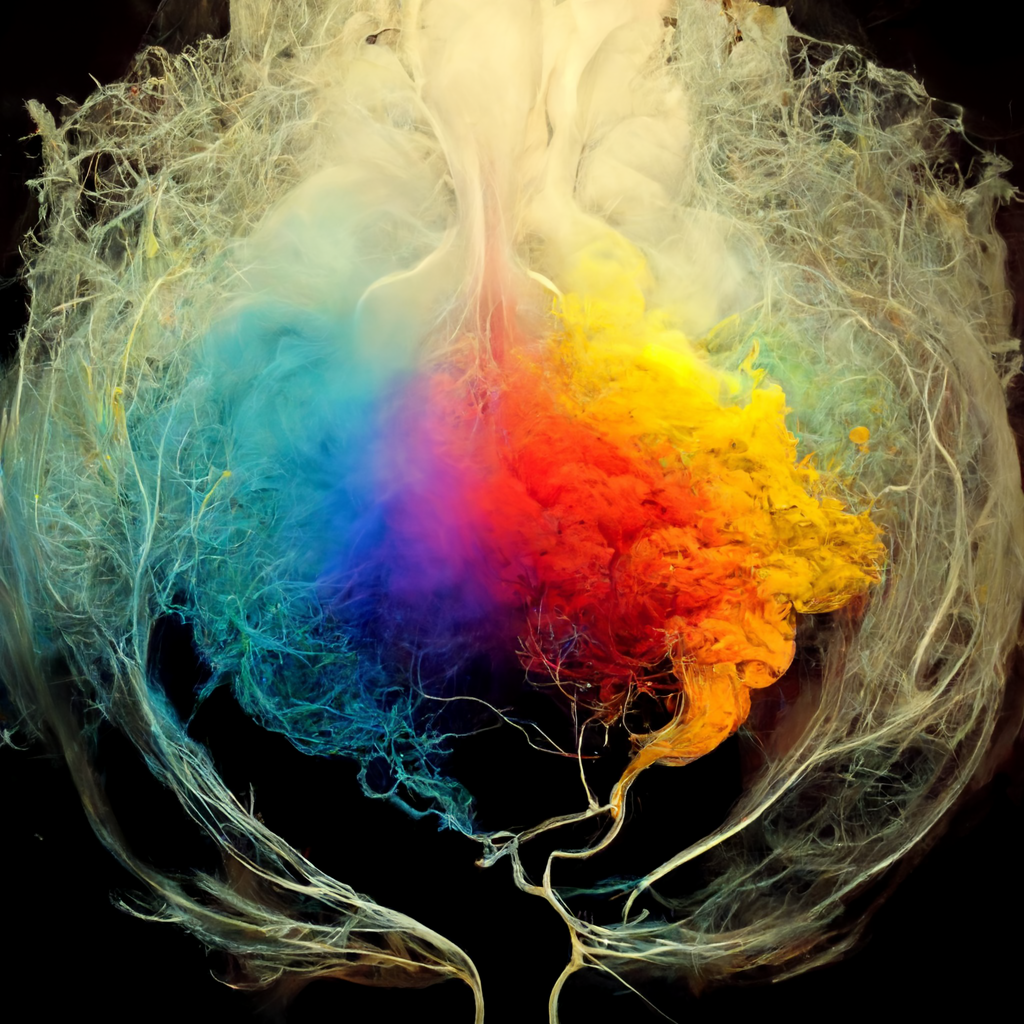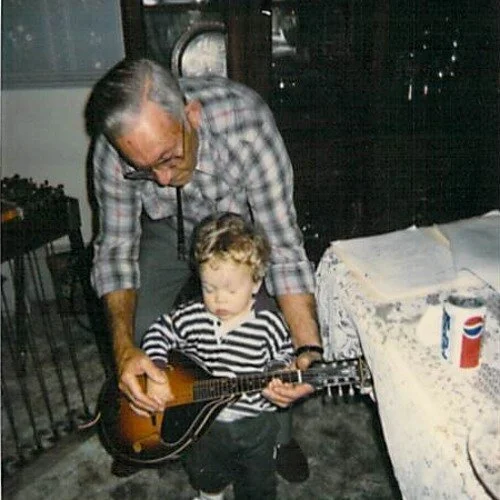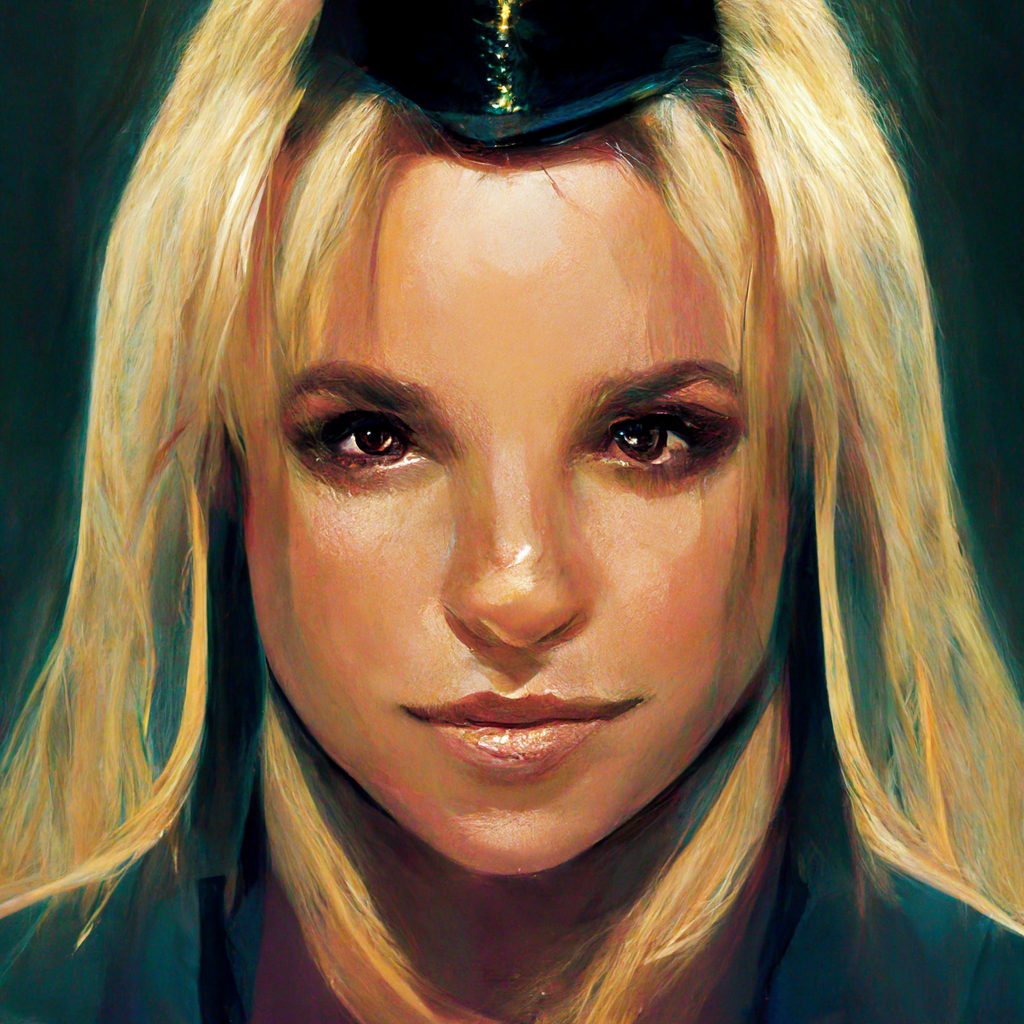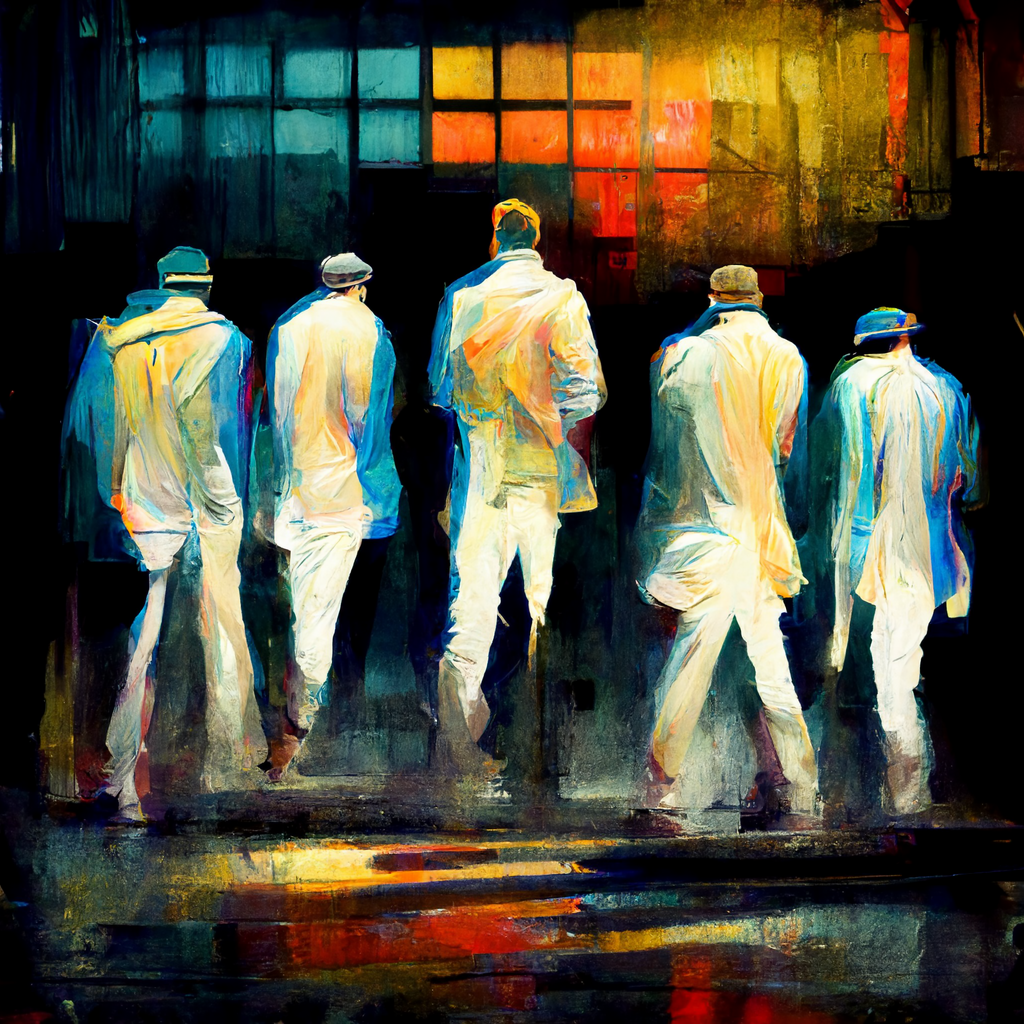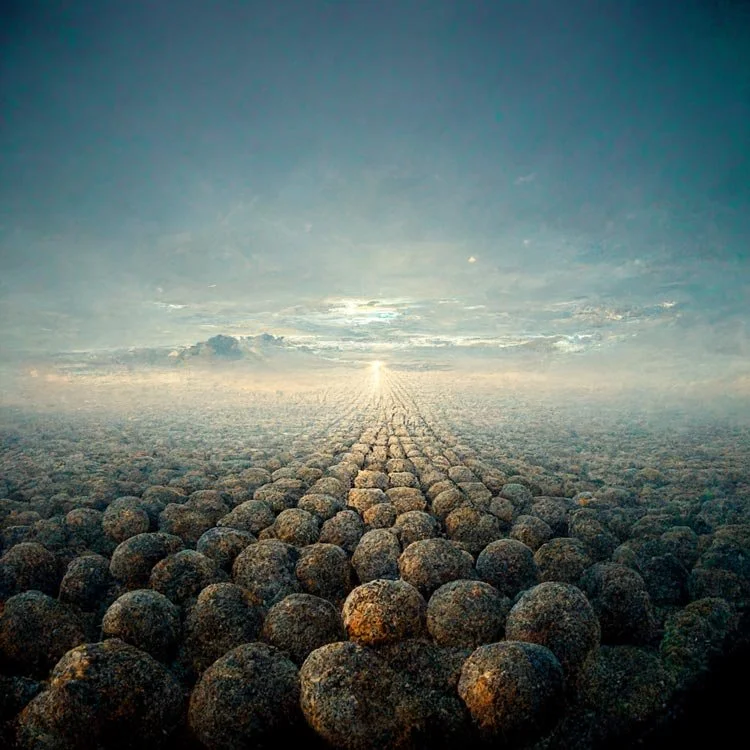On Synesthesia and Symphony Brain
On This Page
“Synesthesia is hearing the color of sounds” – made with Midjourney
Hello there! In this blog I share some thoughts on living with a brain that’s programmed for creativity, and how synesthesia is an intriguing companion along the way.
What is Synesthesia? It’s defined as a perceptual phenomenon in which stimulation of one sensory or cognitive pathway leads to involuntary experiences in a second sensory or cognitive pathway.
I am a proud synesthete, which means my brain likes to blur the lines when it comes to sensory info. It makes my day-to-day experience rather unique compared to other folks.
There are a lot of famous people with synesthesia, and a lot of them are artists! Pharrell is one of my favorites, and he’s talked a lot about how the intermingling of his music/color senses is a frequent inspiration.
I’m someone whose mind’s eye can “see” the music I hear, (part music/color chromesthesia and part something else like watching actors perform a play on a floating stage).
My brain also does a few other odd crossovers, including tasting the “3D shape” of food I’m eating (taste-shape synesthesia), or hearing the “sound” or “song” of things I see/experience (color-tone synesthesia).
Hearing the song of things is what I affectionately refer to as my Symphony Brain. :)
And on very rare occasions when touching things with my hands a sound will play in my head as if I could play any surface on earth like a piano or a theremin (tactile-auditory synesthesia). This one is an amazing experience when it happens.
Molding The Musical Mind, and the Creation of my Symphony Brain
For my entire life I’ve been surrounded by music, artists, and creatives of all types who have helped feed the unique way I experience the world.
The combo of synesthesia and a musical/artistic brain often creates a tornado of creativity inside my head.
However, I strive to take my special brain and put it to use for the good of the world, imagining solutions for problems that others might never think of.
My mom has this iconic picture of her uncle Rossie teaching me to play his mandolin when I was only 2 or 3 years old.
They got me started on music & bolo ties early
Uncle Rossie, age 60-something, teaches Shep, age 2/3, how to strum a mandolin.
I guess my kid brain thought it was a pretty good time, and from then on my imagination decided it would never stop churning out songs. Symphony Brain™ was born.
Yes – in my 30 years of life so far, I’ve been hostage to a subconscious that endlessly tries to turn everything into a song.
Because of this condition, I’ve actually written thousands of songs to date (Probably 1200-1500 “official” tracks, and somewhere between 3000-5000 other songs I made up, sung, and then forgot 🤣. Although, that top end number could easily be a loooot more. I just… can’t remember).
Here is a little tiny snapshot of my music on Spotify. I rarely publish the music I write – it usually goes directly to friends and family without making it to streaming platforms.
For the most part, I’m not actively aware that I’m doing this – it just happens.
I absentmindedly write music about random stuff like:
cloud shapes
taking out the trash
how much my dog loves her toys
weird things I overhear at the grocery store
and literally anything else happening in my space
I write songs in English. I write them in Spanish. Sometimes I even write them in straight up Enya/Sigur Ros gibberish.
However, one interesting hallmark of this process is that my brain writes a lot of these songs in multipart harmony. Like… my brain just spawns a barbershop quartet sometimes and they start singing about random stuff. It’s wild.
You ever see that episode of Family Guy where Peter wishes for theme music everywhere he goes?
It’s like that.
My mind is manufacturing a soundtrack constantly, (which can be a double-edged sword.)
Frequently a fully finished song will fall into my lap, completed from start-to-finish inside my subconscious musical auto-processor.
Can you imagine getting a song you’ve never heard before stuck in your own head?
It can be very distracting at times, but I can’t complain – I love it and I think it’s a true superpower.
Is it possible for you to get a song stuck in your head that you’ve never heard before?
The answer is yes. Thank you, Symphony Brain™.
I vividly recall the first time I “remembered” a song that doesn’t exist.
It was the year 2000 – Britney Spears and the Backstreet Boys were everywhere, and my 8 year old brain was soaking up musical influence left and right.
“Britney Spears”, Midjourney
In middle of the night I bolted up in bed, waking out of a dream where Britney and the Backstreet Boys had been performing a music video together of a song that didn’t exist. And it was… AMAZING.
“Backstreet Boys”, Midjourney
My mind’s ear could hear the whole song playing back while I laid there in bed wondering what was happening, trying to figure out if it was a song I’d actually heard before.
I sung it for a few people the next day and I quickly learned from my friends that it was definitely not a real song haha.
This same phenomenon just kept happening again and again over the years, to the point where I started keeping a recorder and a note pad beside my bed in high school to write down ideas I would hear in dreams.
In 15+ years of making music, I’ve actually closed the loop a few times on making songs that I heard in my dreams.
However, most of the time for that material I end up pulling bits and pieces of it into other productions, rather than running it as a standalone track.
Music as a trigger for Synesthesia
Sometime around my 15th birthday I started “seeing” the music I was listening to. Once again, nice job Symphony Brain™.
Cool colors would swirl around in my mind’s eye, and eventually it evolved into seeing full stories that would play out with actors and special effects on a floating stage in my head.
I vividly remember one particular experience with the floating stage thing. I had just turned 17, and I was staying up late while producing a progressive trance song the summer after my junior year of high school.
As I worked through the song, each section had it’s own visual performance segment on the stage in my mind.
It was the story of an average peasant in a steampunk world rising up to beat his challenges and become a king, and to this day I can still see it in my head when I listen to the song. If you’re interested in listening to 17 year old Shep’s trance music explorations, I’ve embedded the track here.
Combining the sound visualizations with my music brain has led to some interesting compounding effects, including the ability to imagine a completely new song that also tells a story as I imagine it.
I eventually realized that what was going on in my head was called Synesthesia.
Odd Combinations of Synesthesia and the Compounding Effects
You’ll see in the intro to this article I listed a few of the different types of synesthesia I have. It seems like neurologists are rekindling their interest in the field, whereas it was sort of ignored throughout much of the 20th century.
Interestingly enough, sound-color synesthesia has been loosely documented as more common occurrence of synesthesia in the general population.
A rough visual reference for the flavor of saké – a field of 3D spheres flowing off into the distance. Made with Midjourney.
Conversely, some of the types I exhibit are either uncommon, rare, or undocumented:
Color-timbre synesthesia (uncommon)
Some colors occasionally sound like different instruments or waveforms sometimes. Yellows are often a brass section and blues are frequently a sine wave combined with ocean sounds.
Taste-shape / gustatory-shape synesthesia (rare)
Tabasco hot sauce is a field of 3D pyramidal spikes fading into darkness/fog
Junmai saké is a field of gray 3D spheres flowing off to the horizon
Tactile-timbre/music synesthesia (very rare)
All the world’s a piano! With this one, the surface texture I’m touching turns into a magic piano or theremin and I can play its unique sound in my head as a full instrument using my hands
And lastly, the one that I think is truly my superpower: Concept-music synesthesia aka SYMPHONY BRAIN!
This one means that when looking at something, thinking about it, or having some kind of sensory experience with it, I can “hear its song” in my head like it’s singing to me.
I haven’t been able to find documentation of this one anywhere, but I feel like this one is the reason why writing music comes so naturally to me.
All in all it makes for an exciting ride through life. Sometimes having all of this going on inside my head can be a bit overwhelming, but that feeling is pretty rare. I typically feel like it’s a lovely departure from the mundane.
Putting all of this together, it’s easy to see why I’m fascinated with the junction of art and technology.
Hell, just doing the Midjourney prompts for this blog I was able to actually put visuals together for some of the things I’ve never been able to explain before. (The saké visual is one that I’ve struggled to explain for years!)
Immersive and multi-sensory technology helps us close what I call the imagination gap for our audiences.
Not everyone has a 10,000 horsepower imagination, and in fact many people have the opposite of synesthesia – they might be missing a sense like smell/sight/sound/taste, or completely lack the ability to visualize things in their mind’s eye (aphantasia).
Technology helps us close the gap, and show others what we ourselves are sensing in our subjective human experience.
As the immersive realms become ever more experiential, through the use of emerging technology for sensory & visualization purposes we will be able to tell stories and engage minds more collectively than ever before.
So there you have it. Hopefully this brief romp through my mind was entertaining and intriguing!
As always, come back again soon for more thought-provoking content.
Cheers :)
